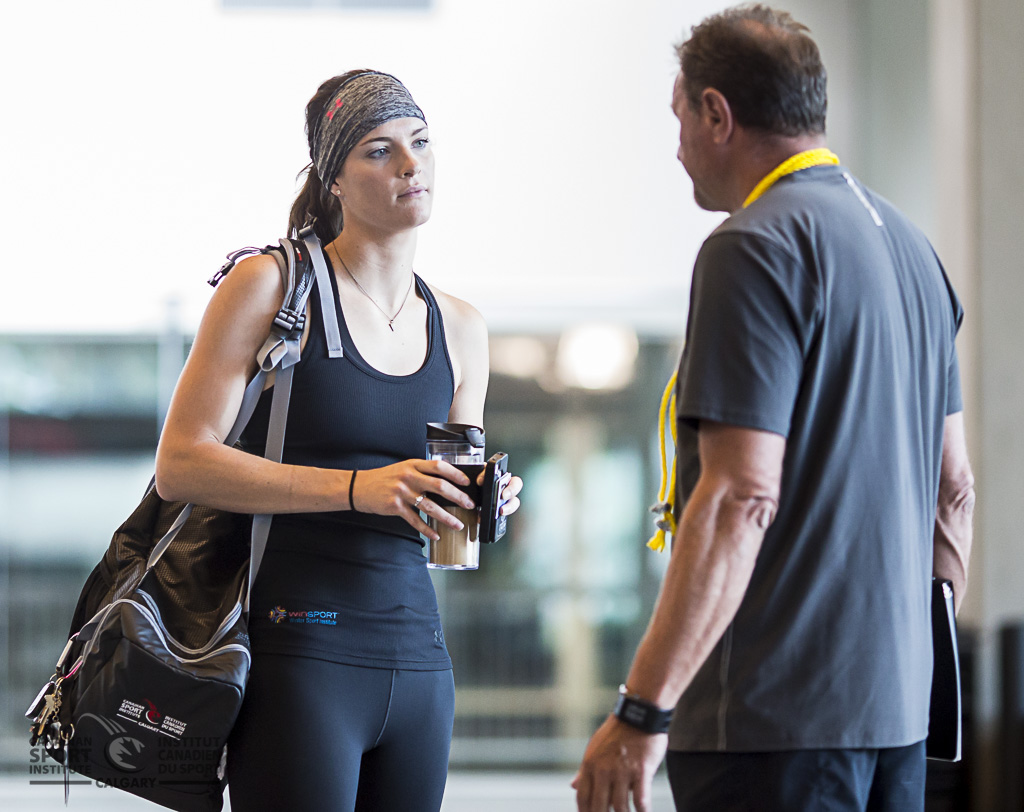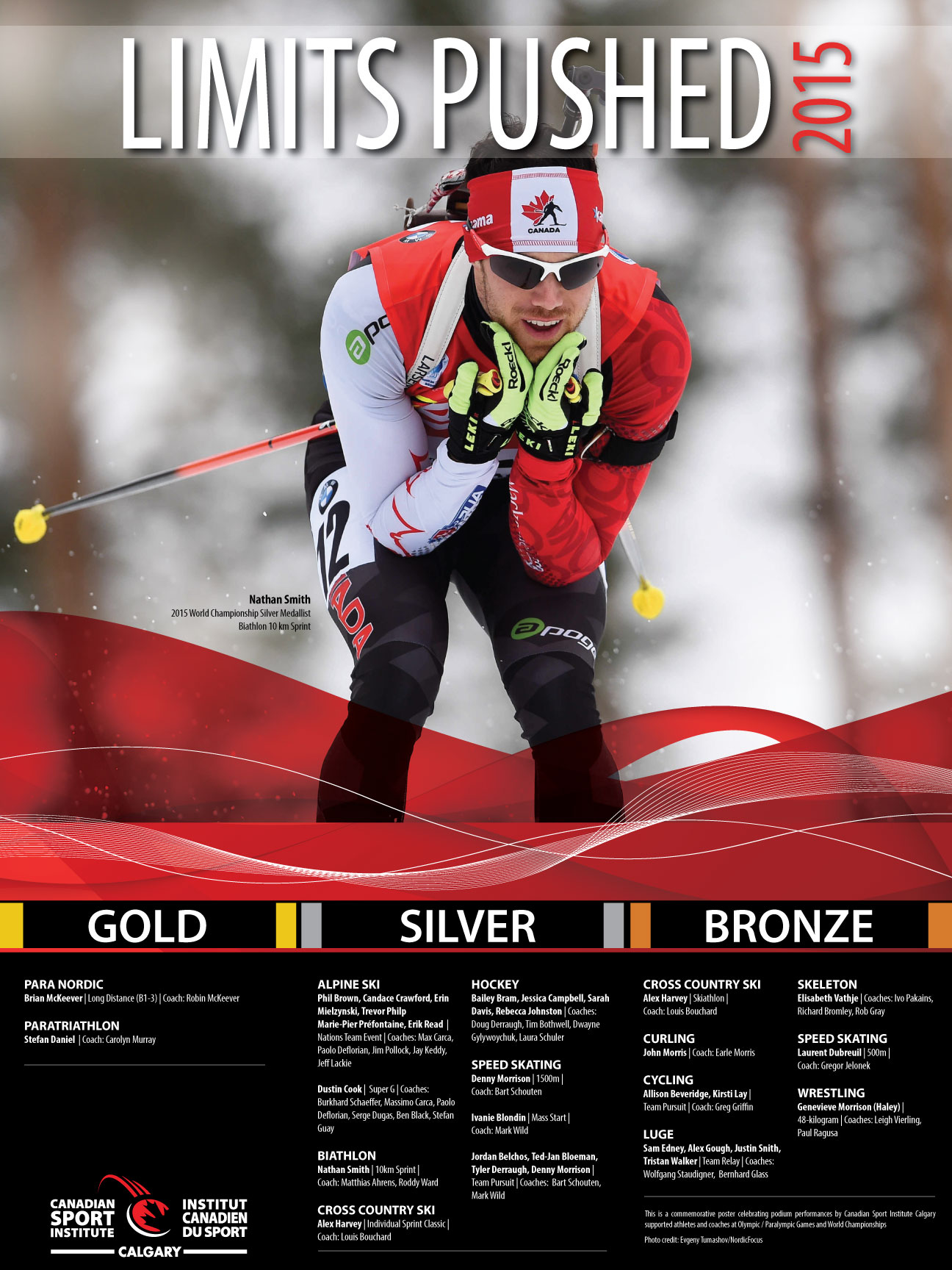Mindful Monday Blog by Frank van den Berg, Lead Mental Performance Consultant at the Canadian Sport Institute Calgary
Disclaimer: Writing this article from a humanistic perspective, this information is meant for people of all ages, cultural backgrounds, spiritual preferences, sexual/gender orientations, and levels of (dis)ability.
Body image is a subjective picture of how we, consciously and unconsciously, relate to our bodies. It is influenced by how we perceive and interpret the messages being offered through our social environments and the media, as they relate to ourselves.
Body image can be(come) a widespread pre-occupation and obsession in North American culture, with mixed messages being broadcast about what is ‘right’ physique and body type. Think about what people generally say when thinking of ‘The Perfect Man’ or ‘The Perfect Woman’…
It’s important to distinguish between what an appropriate and healthy body image can be, or what a distorted and unhealthy body image can look like.
A healthy body image can be characterized when:
• You unconditionally accept your body
• You cherish your uniqueness and individuality
• You reject comparing your body with others’
• You seek to establish a healthy approach to exercise, eating and personal lifestyle
• You resist defining your self-worth and value by your physical appearance (only)
Conversely, a distorted or unhealthy body image can be characterized when:
• You lack confidence in our own body, size, shape, and attractiveness
• You have a distorted perception of your body, favoring another’s over your own, or
• You reject your body type, wishing for another
• You obsess or worry about consumption of food, calories, metabolism, weight, and energy burnt
• You connect stereotypes (e.g. being slim, thin, slender, perfect) with happiness, success and health
Media Influence
For decades, the film industry, printed media and more currently social media, have been and still are powerful conduits for transmission and reinforcement of cultural beliefs and values. Their continued mass consumption is certainly contributing to norms and standards for physical attractiveness in Western societies, by pervasive presentation and adoration of ‘desirable’ or ‘preferred’ body sizes, types and shapes.
Extensive and voluminous social media usage people like to engage in for enjoyment and online social connection, in particular photo- and video-based activities (e.g. scanning and scrolling through platforms like Instagram and Facebook, and posting pictures of yourself) does appear to be correlated with body image concerns, negative thoughts and feelings about yourself, obsession with nutrition/exercise, disordered eating/fueling, overtraining and/or under-recovery.
For example, in one study women reported that they tend to compare their own appearance negatively with their (sometimes distant) peer group, acquaintances, and celebrities. That’s not to say that men are not exposed to similar influences, as their participation in ‘fitspiration’ social media activity is also on the rise (note: stay tuned for tips & tricks on how to neutralize fitspiration). Watching ‘beautiful’ people do exercise, eat or present themselves (or pretending to…) can make us harsher, more critical towards ourselves in response, sometimes leading to beliefs like ‘I want to be like that’ or ‘I should do that too’.
One of the problems with consumption of – and engagement with – pictures and videos on social media platforms (and advertisements in print or TV), is that we get pretty much a momentary and one-sided presentation of those influencers, often without understanding the context or personal story (behind the image).
Daily Training Environment
Also in the actual, interpersonal and social context of sport, people engage in regular activities (e.g. physical testing, training and competition), and communicate different messages, that may have an impact on how athletes see themselves or others. Directly critiquing or commenting – both praise and criticism – on the physical/body appearance, shape, size or weight of an athlete can be hurtful or even harmful. Consideration of how we all communicate with each other (i.e. sending, receiving and interpreting messages of verbal and non-verbal nature) is critical, and should ideally be offered around athletic skill, function, effort, perseverance or other attributes that are not appearance-based. Whenever factors related to body image (e.g. weight, body size/shape/type) are to be discussed, this needs to be done purposefully, professionally and discretely.
Consider This
For taking care of yourself, with awareness and ability to self-regulate, you’re advised to exercise a healthy level of self-criticism, supplemented with a good dose of self-compassion. Think about the following ways in which you can apply beneficial strategies for a positive and appropriate body image:
1. Cope in healthy ways:
• Engage in honest and non-judgmental reflection (e.g. mindfulness practice)
• Form purposeful or productive intentions, followed by adequate actions
• Express and/or share your thoughts, feelings and questions (e.g. with others, through journaling)
2. Respect the individual:
• Realize and cherish your (and everyone’s) uniqueness and differences
• Accept that – although we are all humans – everyone has a different ‘setpoint’, and can make progress from there
• Use language that is respectful, inclusive and supportive
3. Consider real performance indicators:
• Work with your genetics (nature) while taking care of your well-being and performance (nurture)
• Nourish yourself with proper fuel/nutrition, good spirits/mindset, in supportive social environments
• Capitalize on and benefit from good coaching and teamwork
• Apply good physical and mental training
 En conversant avec monsieur Gramantik, on comprend vite qu’il doit une grande part de ses succès à sa rigueur et à sa pure passion du sport. Il décrit son rôle d’entraîneur comme « une passion, pas un travail » et se dit « très chanceux d’avoir trouvé ma passion et d’en avoir fait mon métier. Je n’ai pas pris de vacances en quinze ans. Pourquoi je le ferais? Je suis en vacances chaque jour! »
En conversant avec monsieur Gramantik, on comprend vite qu’il doit une grande part de ses succès à sa rigueur et à sa pure passion du sport. Il décrit son rôle d’entraîneur comme « une passion, pas un travail » et se dit « très chanceux d’avoir trouvé ma passion et d’en avoir fait mon métier. Je n’ai pas pris de vacances en quinze ans. Pourquoi je le ferais? Je suis en vacances chaque jour! »
 Calgary's Michael Sametz is looking towards the 2016 Paralympic Games. After his recent breakthrough winning both the Time Trial and the Road Race at the National Championships in Lac-Mégantic, Quebec, the 18-year-old has every reason to be optimistic that he will be a part of the team representing Canada in Rio de Janeiro.
Calgary's Michael Sametz is looking towards the 2016 Paralympic Games. After his recent breakthrough winning both the Time Trial and the Road Race at the National Championships in Lac-Mégantic, Quebec, the 18-year-old has every reason to be optimistic that he will be a part of the team representing Canada in Rio de Janeiro.